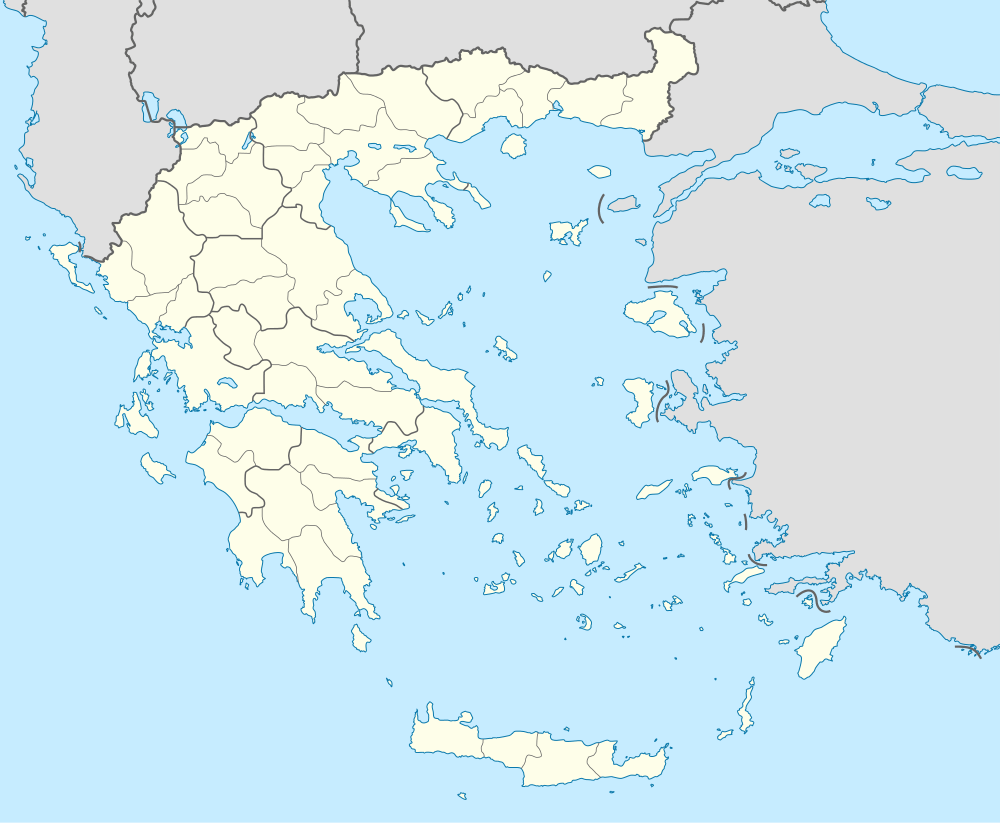Margariti
| Margariti Μαργαρίτι | |
|---|---|
 Margariti | |
|
Location within the regional unit  | |
| Coordinates: 39°22′N 20°25′E / 39.367°N 20.417°ECoordinates: 39°22′N 20°25′E / 39.367°N 20.417°E | |
| Country | Greece |
| Administrative region | Epirus |
| Regional unit | Thesprotia |
| Municipality | Igoumenitsa |
| • Municipal unit | 149.2 km2 (57.6 sq mi) |
| Population (2011)[1] | |
| • Municipal unit | 2,491 |
| • Municipal unit density | 17/km2 (43/sq mi) |
| Community[1] | |
| • Population | 783 (2011) |
| Time zone | EET (UTC+2) |
| • Summer (DST) | EEST (UTC+3) |
| Vehicle registration | ΗΝ |
Margariti (Greek: Μαργαρίτι) is a village and a former municipality in Thesprotia, Epirus, Greece. Since the 2011 local government reform it is part of the municipality Igoumenitsa, of which it is a municipal unit.[2] The municipal unit has an area of 149.223 km2.[3] Population 2,491 (2011).
Names
Margariti was named after the white flower Margarita (Greek: Μαργαρίτα) which is known to grow in vast amounts in the region around the valley of Margariti. Margariti is known as Margëlliç in Albanian[4] and as Margliç in Ottoman Turkish.
History
In February 1913, Margariti was taken by the Greek army and joined Greece following the Treaty of London. During that period all village elders of the region gathered and declared that they would resist the incorporation of the area into Greece.[5] At that time the town had a mixed population of Greeks and Cham Albanians until the final expulsion as a result of the Cham collaboration with the Nazi occupation forces. Almost all Cham Albanian monuments of Margariti were destroyed during World War II.[6]
Province
The province of Margariti (Greek: Επαρχία Μαργαριτίου) was one of the provinces of the Thesprotia Prefecture. Its territory corresponded with that of the current municipal units Margariti and Perdika.[7] It was abolished in 2006.
Notable residents
- Hamdi Çami, deputy of Preveza in the Ottoman Parliament
- Jakup Veseli, representative of Chameria in Vlora Congress, signatory of Albanian Declaration of Independence.[8]
- Konstantinos Zakas (1916–1986) Greek Army General.[9]
References
- 1 2 "Απογραφή Πληθυσμού - Κατοικιών 2011. ΜΟΝΙΜΟΣ Πληθυσμός" (in Greek). Hellenic Statistical Authority.
- ↑ Kallikratis law Greece Ministry of Interior (Greek)
- ↑ "Population & housing census 2001 (incl. area and average elevation)" (PDF) (in Greek). National Statistical Service of Greece.
- ↑ Kretsi, Georgia (2002). "The "Secret" Past of the Greek-Albanian Borderlands: Cham Muslims Albanians: Perspectives on a Conflict Over Historical Accountability and Current Rights". Ethnologia Balkanica : Journal for Southeast European Anthropology. 6 (171). OCLC 717134456.
- ↑ Leon, George B. (1990). Greece and the First World War: from neutrality to intervention, 1917-1918. East European Monographs. p. 353. ISBN 978-0-88033-181-4. Retrieved 1 November 2010.
- ↑ Kiel, Machiel (1990). Ottoman architecture in Albania, 1385-1912. Research Centre for Islamic History, Art and Culture. p. 3. ISBN 978-92-9063-330-3. Retrieved 1 November 2010.
- ↑ "Detailed census results 1991" (PDF). (39 MB) (Greek) (French)
- ↑ Vlora, Ekrem(2001) (in Albanian), Kujtime [Memories], Tirana, Albania: Shtëpia e librit & Komunikimit, ISBN 99927-661-6-6
- ↑ Margariti.gr